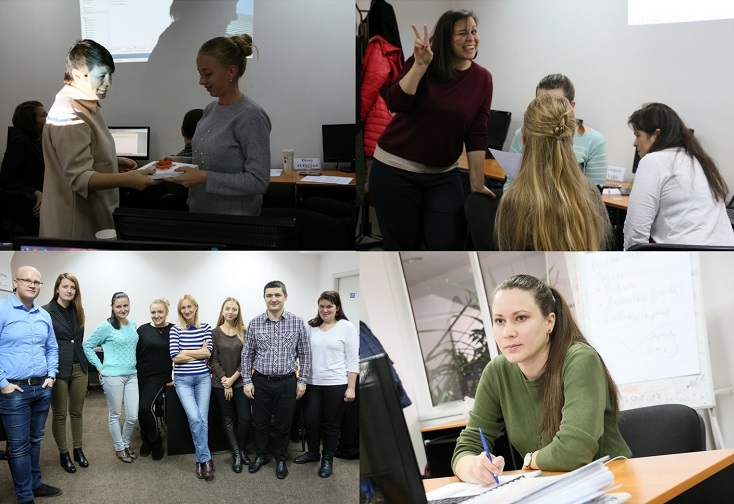Radio Journalism: Learning to Spread Messages by Radio Waves

What is the specificity of radio journalism? What distinguishes a text written for a newspaper or online publication from a text written for the radio? Why is information ephemeral, and how can we attract the attention of radio listeners? The SAJ students found answers to these questions at the course of Radio Journalism. For three weeks, Liliana Nicolae, reporter and editor at Europa FM in Bucharest, along withTamara Grejdeanu, Liliana Barbarosie, and Diana Railean, Radio Free Europe journalists, were working together with the students.
Radio journalism is one of the most complex courses at the SAJ. To offer the students as much useful information as possible, it was divided into four modules. The first one – Technical Skills – was intended to introduce the students to the secrets of radio sound. Together with Tamara Grejdeanu, the young journalists learned to work with digital editing software and mastered the entire process – from sound recording to broadcasting.
The second module was focused on the rules for writing a text for the radio and on the content of radio materials. Under the guidance of Liliana Barbarosie, participants prepared several materials: sound pictures, an interview, and a news report. The trainer insisted that the choice of words you use on the radio is very important and recommended students to write as simple and understandable as possible. “On the radio, information is ephemeral. A reporter or a radio presenter has only one chance,” the journalist added.
Students discussed the features of radio report and radio package within the third module. Guided by Liliana Nicolae, they tried pre-documentation and field work, and produced their own journalistic materials. At the end of the four days of the course, the trainer encouraged students to be the most curious, informed, creative and original possible in the profession they chose.“You cannot be a journalist if you stay in the office,” Liliana Nicolae concluded.
The last module, Radio Newsroom, was the most complicated and, at the same time, the most interesting one. It lasted four days, during which the students teamed up to create two radio shows and a newscast. The young people worked at the pace of a real editorial office and learned that the final result depends on each member’s involvement. Trainer Diana Railean was pleased with the result and suggested that the students aim at a successful career in journalism. “Do not stop here. Read every day. Document yourself and always stay informed!”
Today, the School of Advanced Journalism starts the course of TV Journalism.
